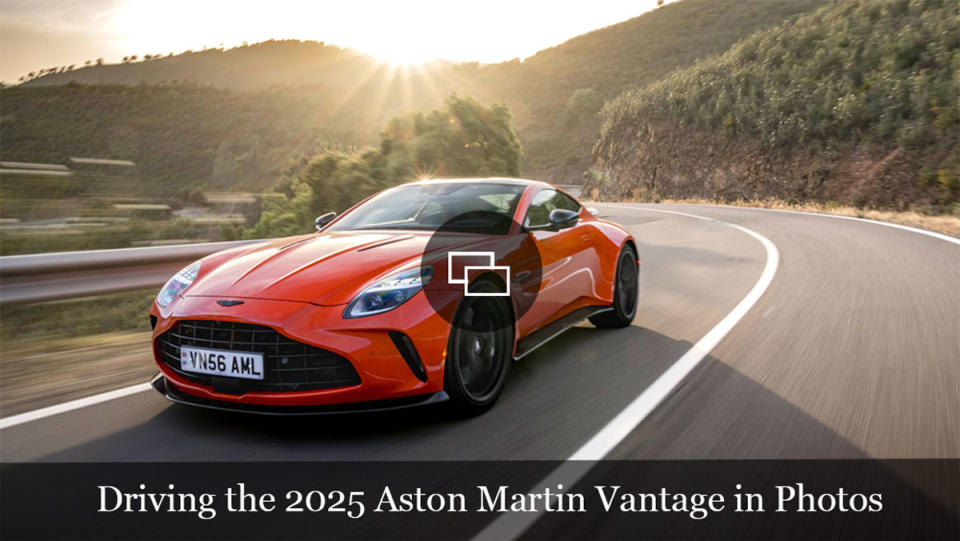First Drive: The New Aston Martin Vantage Delivers Power, Agility—and Plenty of Roar
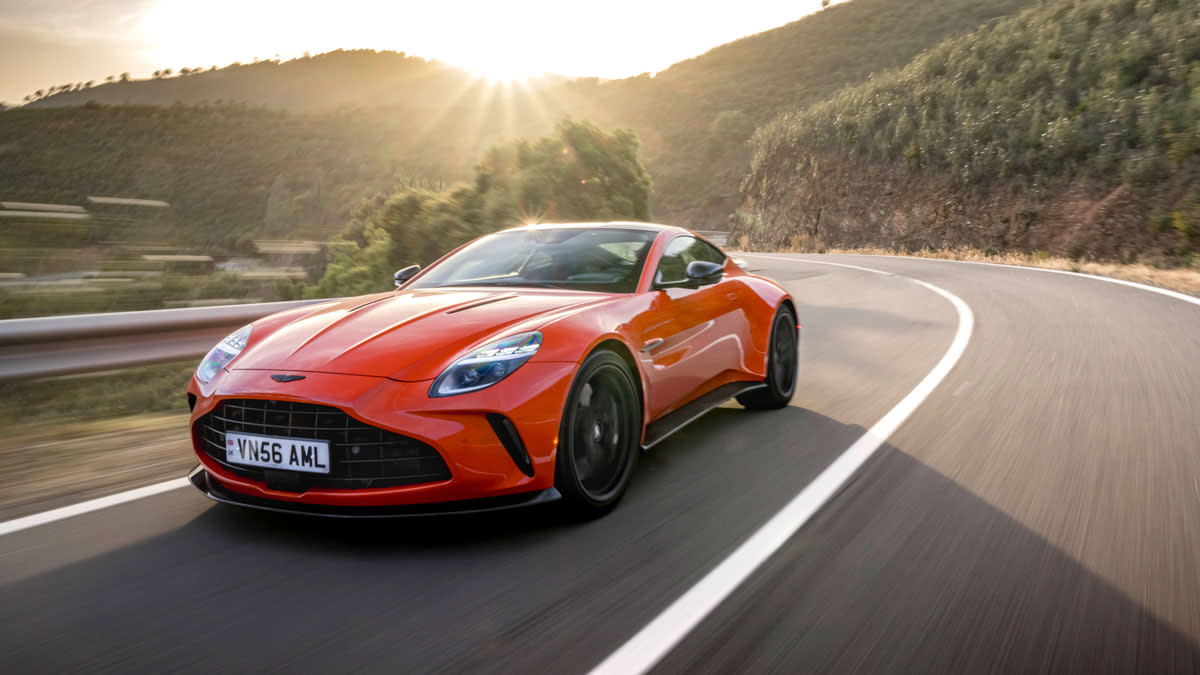
The new Aston Martin Vantage marks another step in an ambitious plan from the executive chairman of the marque, Lawrence Stroll, to reinvent the storied British sports-car manufacturer. Stroll wants to take Aston Martin further upmarket, away from such competitors as Porsche and Mercedes-AMG.
That process started with the launch of the DB12 coupe, named Robb Report’s 2024 Car of the Year, a model which features a mildly restyled exterior along with a significantly more luxurious interior that showcases the automaker’s own in-house-developed infotainment system. The DB12 was also given more power along with a host of chassis upgrades compared to its predecessors. The 2025 Vantage follows the same formula, boasting 30 percent more power and 15 percent more torque than the outgoing model. It will, Aston Martin claims, sprint from zero to 60 mph in 3.4 seconds and hit a top speed of 202 mph.
More from Robb Report
Aston Martin Has a New Hand-Built V-12 Engine for Its Next Supercar
How Zendaya's New Movie Levels Up the Luxury Product Placement Game
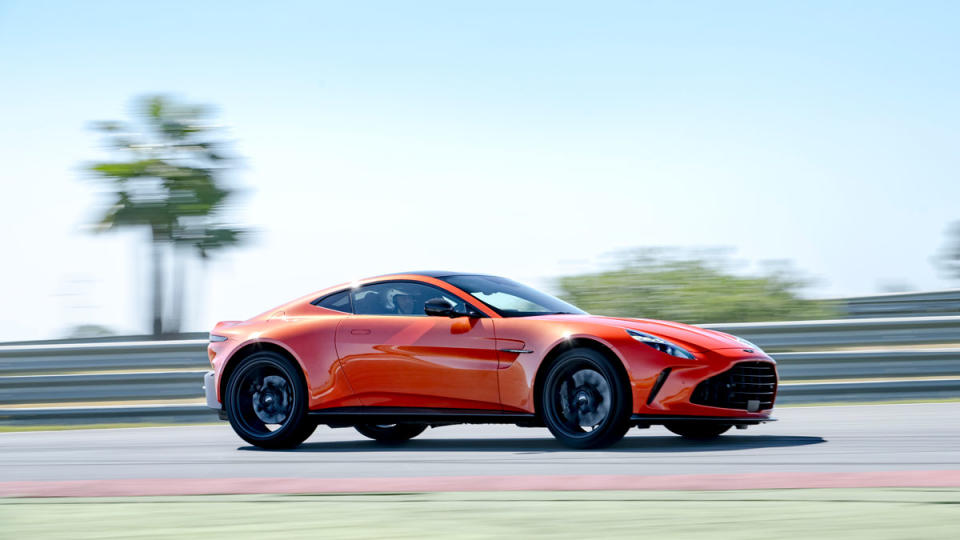
The Vantage’s exterior presents an aesthetic of coiled muscle and menace; a hungry beast ready to pounce. The front and rear fenders have been pumped out 1.2 inches to cover a wider track, accented by 21-inch forged alloy wheels wrapped in new Michelin Pilot Sport 5 S tires developed specifically for the car. A longer hood runs down toward a grille opening that’s 38 percent larger to improve cooling and is flanked by vertical vents that create air curtains around the front wheels to improve aerodynamic efficiency. The outside edges of the vents pull the front corners of the car outwards, further emphasizing the width. And at the rear is a new diffuser with bazooka-like dual exhausts on either side. The diffuser and the rear spoiler work together to produce a maximum of 158 pounds of downforce on the rear axle at speed.
The redesigned interior is a step change over that of the outgoing car. The dash now features a horizontal vent graphic that emphasizes the width of the cabin, and a new 10.25-inch digital instrument panel housed in a dramatically styled binnacle. The gearshift paddles are now attached to a new three-spoke sports steering wheel with touch capacitive switches in the spokes.
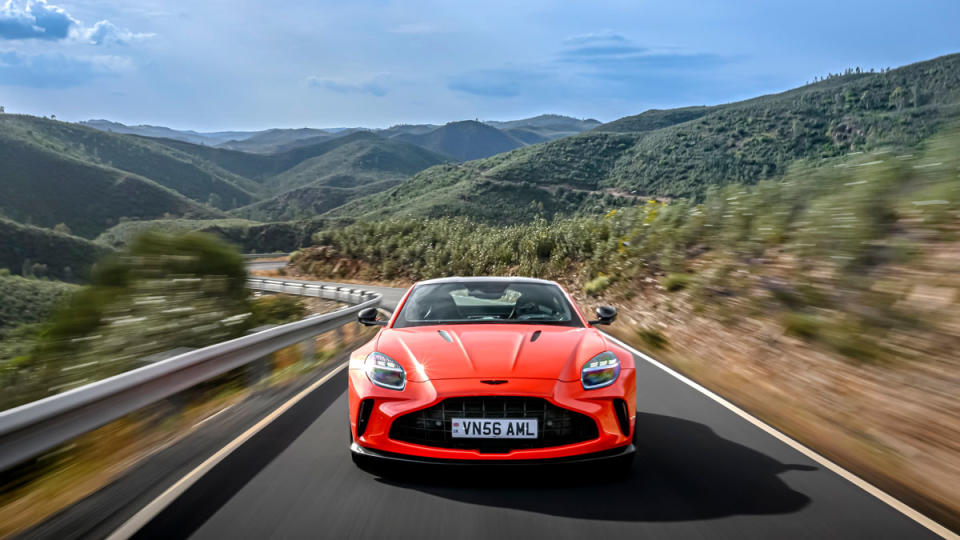
At the center of the dash is a 10.25-inch touchscreen that’s fast reacting and intuitive to use. Below it is a new center console that, as in the DB12, hosts physical controls for functions such as gear selection, temperature adjustment, fan speed, and audio volume, as well as the ignition’s start button, which is surrounded by the rotary drive-mode selector.
Under the hood is a reworked version of the 4.0-liter V-8 originally developed by Mercedes-AMG and first used by Aston in the eight-cylinder version of the 2018 DB11. A deal brokered in 2020, when former AMG boss Tobias Moers was Aston Martin’s CEO, means the British automaker now has much more freedom to determine the level of performance it wants from the versatile and highly tunable engine, which now powers the DB12 and the DBX707 SUV. The power plant will also be the muscle for the mid-engine Aston Martin Valhalla supercar scheduled to make its debut before the end of this year.
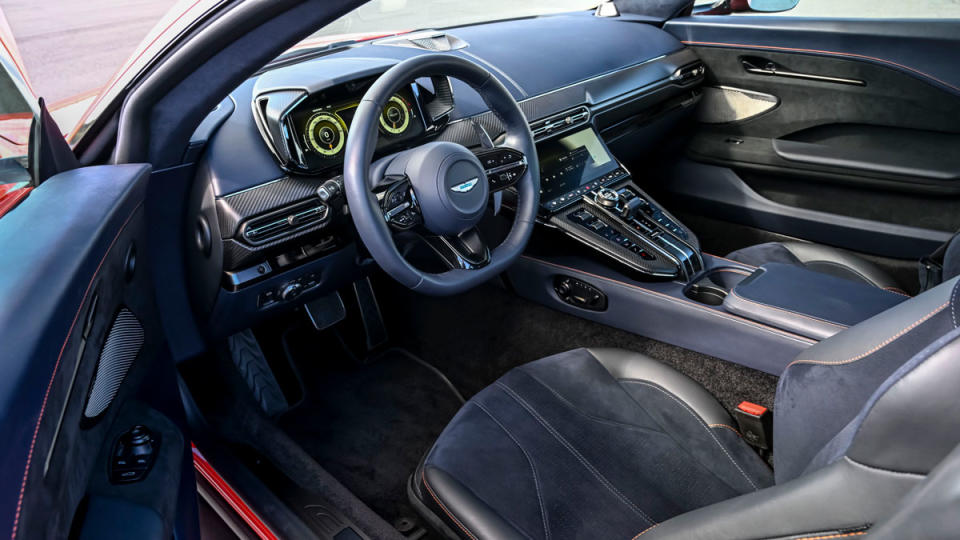
In 2025 Vantage tune, the engine makes 656 hp—from 6,000 rpm to 6,500 rpm—and 590 ft lbs of torque—from 2,750 rpm to 6,000 rpm—courtesy of new cylinder heads, new camshafts, bigger turbochargers, and a new exhaust system. The increases in both power and torque compared with the outgoing car’s V-8 engine begin to take effect from 2,000 rpm, which contributes to a 40 percent increase in throttle response in performance driving. In addition, the larger front grille allows 50 percent more air to pass through additional power-train coolers, and the hot air is extracted via the carefully situated vents on the hood.
The engine drives the rear wheels through a revised ZF eight-speed automatic transaxle transmission that’s been recalibrated to deliver faster, smoother shifts, and can handle the engine’s higher torque output. The gear ratios remain the same as those of the outgoing Vantage, but the e-diff’s final drive ratio has been shortened to deliver faster acceleration.
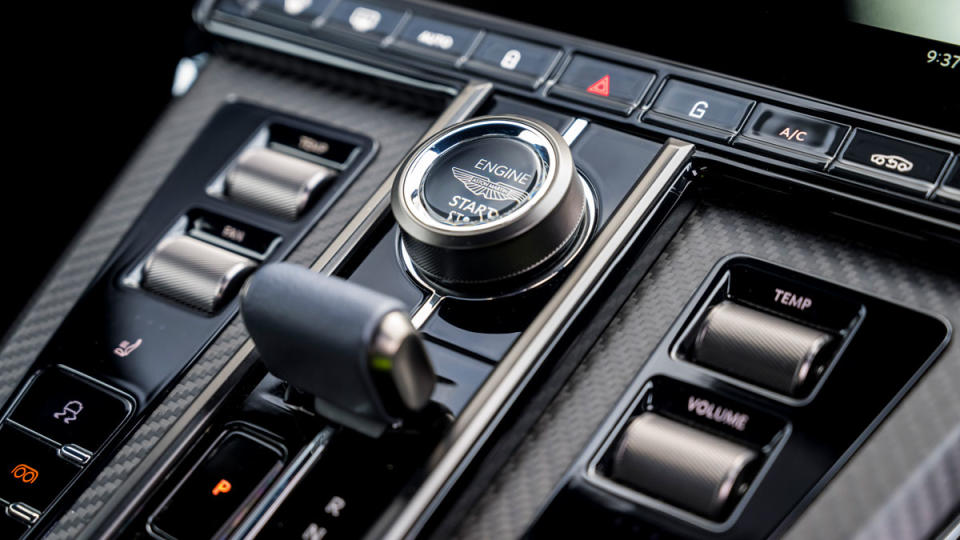
Five different drive modes are now available, with the default start mode being Sport. Twisting the rotary controller to the right selects Sport+, which enhances the power train’s response and stiffens the suspension. Drivers can mix and match power train and suspension settings in Individual mode, and a new Wet mode calms the power train and ups the stability control’s intervention threshold to make the Vantage easier to drive on wet or snowy roads. Then there’s Track mode, which allows drivers to switch off stability control and choose from nine different levels of traction control.
The suspension follows the same multi-link layout front and rear as the previous Vantage, though adjustments have been made to improve steering stiffness by 35 percent and the body’s overall torsional rigidity by seven percent. As for the new Bilstein DTX adaptive shocks, they provide five times the tuning range of the shocks used on the outgoing model, and work with new springs and stabilizer bars. The suspension upgrades have helped reduce understeer by 12 percent while improving ride and body control.
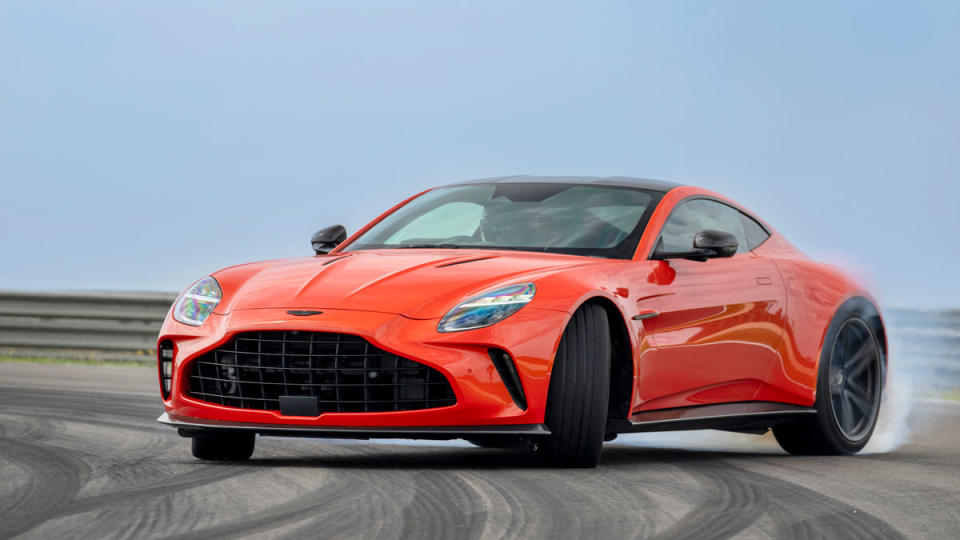
The new Vantage’s enhanced precision can be felt in the first mile—in the steering, the braking, the body control, and the power-train response. It’s a sharper, more focused car than the outgoing Vantage, yet at the same time it feels more refined, with a better ride at low speeds. But this new Aston really comes alive when it’s driven with purpose on a quiet, winding two-lane road. It’s quick and concise, even in the default Sport mode and with the transmission left to its own devices. Activating manual-shift mode instantly ups the pace as it allows you to fully access the engine’s broad operating window. You can surf the torque or ride the revs at will, which is perfect for maintaining momentum on a road you don’t know.
While selecting Sport+ mode stiffens the Vantage’s sinews and sharpens its responses, the suspension setting proved a little too stiff for some of the rougher, hilly Spanish roads we encountered on our test drive, the revs spinning up as the rear tires were on occasion kicked into the air. However, selecting Individual mode and dialing the suspension back to Sport while keeping the power train in Sport+ settled the car.
One lovely, smooth, and empty road allowed us to let the Aston off the leash with everything in Sport+, that mighty V-8 bellowing lustily as it punched the Vantage hard out of the corners and along the short straights. Our tester was fitted with the optional carbon-ceramic brakes that reduce unsprung weight by 60 pounds, though steel brakes are standard. We could trail brake into the tighter corners with confidence, the front axle responding immediately to commands from the steering wheel, and then get on the gas early to exploit the abundant traction.
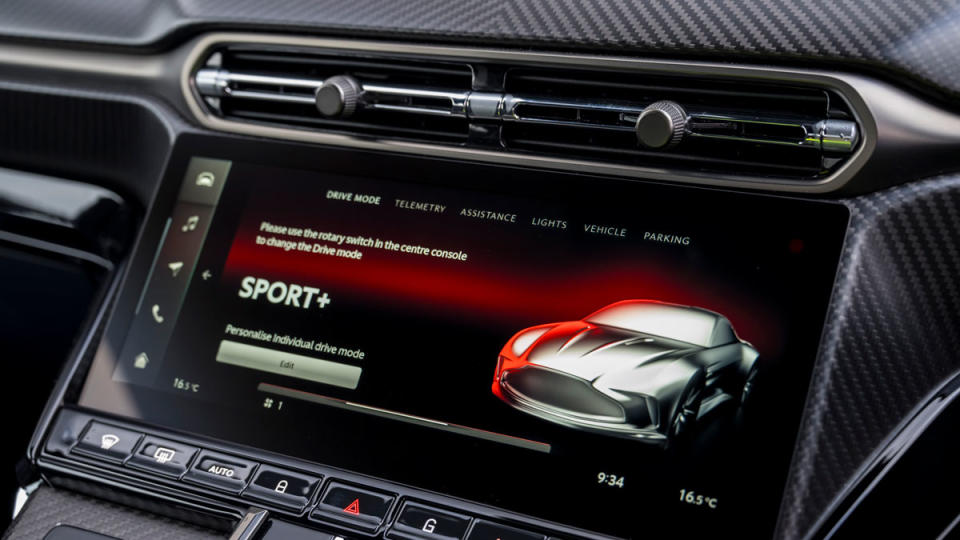
Later, on the fast and twisting Circuito Monteblanco racetrack near Seville, we got to truly explore the Vantage’s dynamic envelope, playing with the car in Track mode with the stability control switched off, and gradually dialing back the adjustable traction control. On the circuit, where there’s room to experiment, we could feel the abundant feedback from the chassis and find the optimal balance through slow and fast corners with brake and throttle.
Yes, the new Aston Martin Vantage is very impressive. But it’s not perfect. The track sessions amplified the weak link we’d detected out on those fast and winding mountain roads: The new Vantage needs a dual-clutch transmission to fully exploit the precision in the chassis and the punch from the power train. The ZF eight-speed auto is smooth and robust, and perfectly fine for most driving, but if you start pushing, the shifts aren’t quick enough in manual mode, and the autobox doesn’t transmit minute variations in throttle with the clarity of a mechanical gear drive.
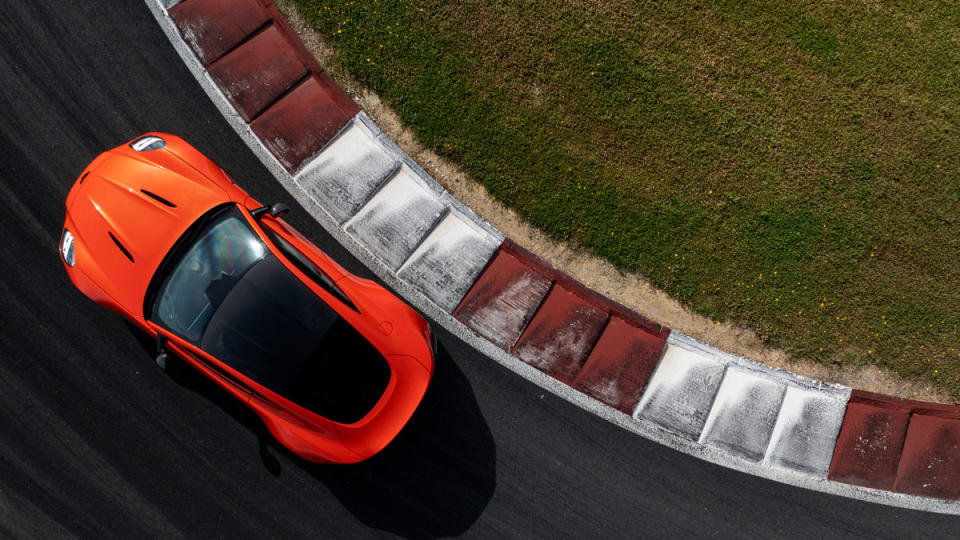
Speaking of gearshifts, the Vantage needs a shift light to help you click the right-hand paddle at just the right moment. That mighty V-8 gets to 7,000 rpm with such ease that it’s nuzzling the soft limiter before you know it, and the car loses speed. The somewhat small graphics on the digital dash, which are hard to read, don’t help.
The steering weighting could also be lighter, reducing the artificial inertia in the steering wheel so the commands to the front wheels arrive fractions of a second earlier in corners. And a slightly wider blending of the input maps for throttle and brake would prevent the engine-management system from occasionally cutting power if you left-foot brake.
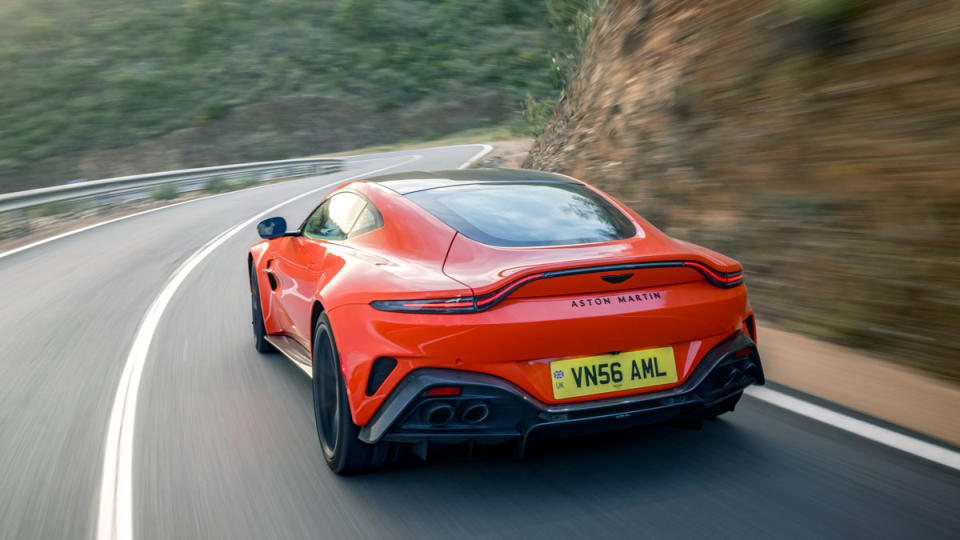
Time to trade in that Porsche 911? We’re not saying that. When the new Vantage arrives stateside later this year, it will be priced starting at $191,000, or just under Porsche’s 911 Turbo. Though less powerful, the lighter, all-wheel-drive Porsche is .7 seconds quicker to 60 mph than the Aston, though 3 mph slower at the top end, and the 911 enjoys an unparalleled reputation as a 24/7 supercar—a bulletproof performer you can drive all day, every day. The rep of the Vantage, and that of Aston in general, is certainly not there yet.
However, where the 911 can sometimes feel a little cold, a little too clinical when driven hard, the Vantage is a bellowing beast of a thing. It’s happy to tool around town with little more than a rumbling murmur, but it gets loud and forceful when stirred from its slumber. And when on track, the harder you drive it, the more it talks to you, giving you the confidence to safely close in on both your limits and that of the car.
Click here for more photos of the 2025 Aston Martin Vantage.
Best of Robb Report
Sign up for Robb Report's Newsletter. For the latest news, follow us on Facebook, Twitter, and Instagram.
